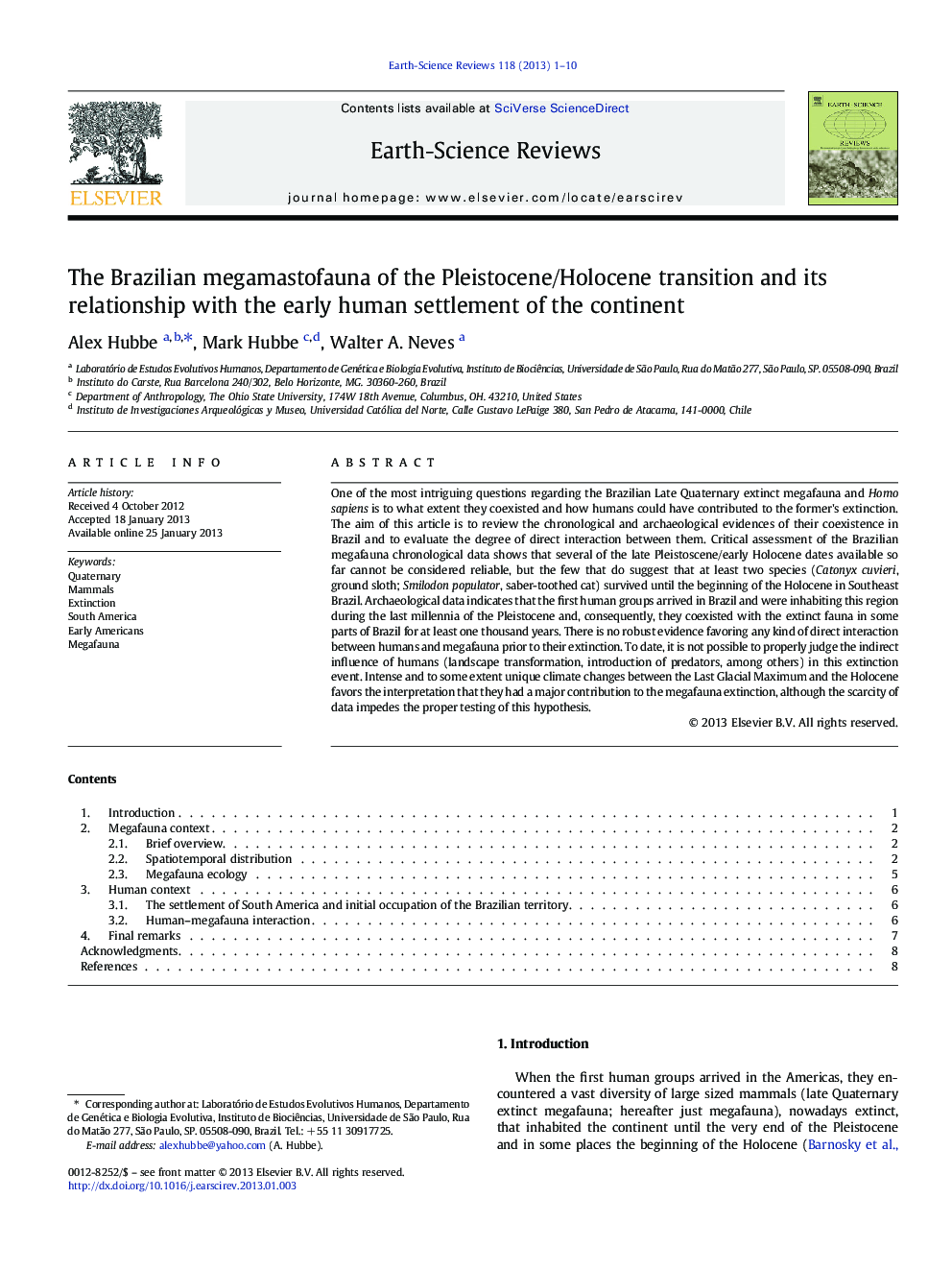| Article ID | Journal | Published Year | Pages | File Type |
|---|---|---|---|---|
| 4725859 | Earth-Science Reviews | 2013 | 10 Pages |
One of the most intriguing questions regarding the Brazilian Late Quaternary extinct megafauna and Homo sapiens is to what extent they coexisted and how humans could have contributed to the former's extinction. The aim of this article is to review the chronological and archaeological evidences of their coexistence in Brazil and to evaluate the degree of direct interaction between them. Critical assessment of the Brazilian megafauna chronological data shows that several of the late Pleistoscene/early Holocene dates available so far cannot be considered reliable, but the few that do suggest that at least two species (Catonyx cuvieri, ground sloth; Smilodon populator, saber-toothed cat) survived until the beginning of the Holocene in Southeast Brazil. Archaeological data indicates that the first human groups arrived in Brazil and were inhabiting this region during the last millennia of the Pleistocene and, consequently, they coexisted with the extinct fauna in some parts of Brazil for at least one thousand years. There is no robust evidence favoring any kind of direct interaction between humans and megafauna prior to their extinction. To date, it is not possible to properly judge the indirect influence of humans (landscape transformation, introduction of predators, among others) in this extinction event. Intense and to some extent unique climate changes between the Last Glacial Maximum and the Holocene favors the interpretation that they had a major contribution to the megafauna extinction, although the scarcity of data impedes the proper testing of this hypothesis.
